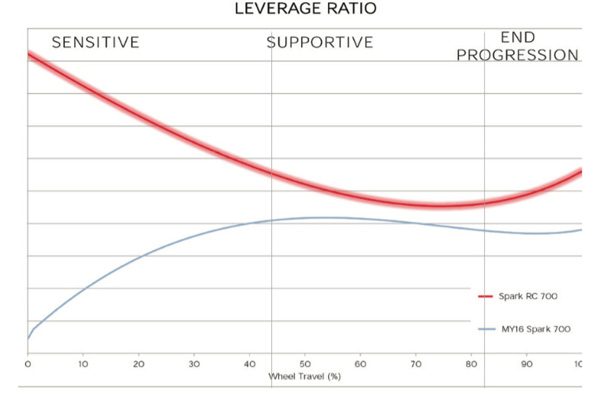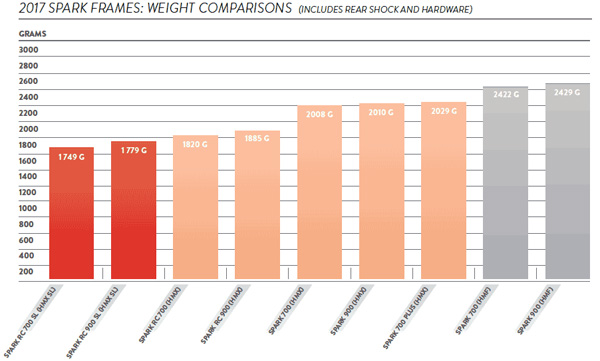Jenny Rissveds and Nino Schurter won the Olympic Games XCO women and men’s gold medals riding SCOTT’s new Spark RC World Cup bikes. We were at the launch of this recently redesigned model at Lenzerheide, Switzerland and were among the first to ride it. The first shipment recently arrived in South Africa so it’s a good time to let you know about our experience…
By Sean Badenhorst
Photos: Mick Ross/Flow MTB
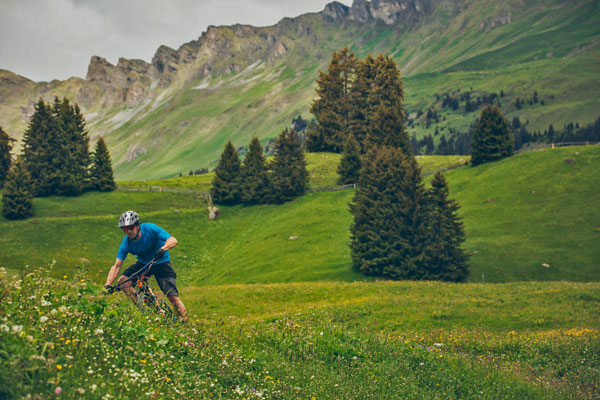
When you work daily in the bicycle industry, you quickly learn which brands are top-tier, market-leading brands and which brands are middle- and lower-tier brands, which generally follow what the top-tier brands are doing. SCOTT is one of those top-tier brands, which does its own research and development in an effort to make its bicycles better.
The 2017 SCOTT Spark is a great example of this. In 2013, SCOTT began looking at ways to improve its full-suspension Spark model, which was already successful in winning World Cup titles, World Championships titles and Absa Cape Epic stages.
Granted, most of this success came via Schurter, a powerful, skilled rider with a hunger to stay at the top of his game and a 2016 Olympic gold medal at the top of his to-still-win list. And who better to include in the redesign of the new Spark than Schurter, a man that could test ride each iteration throughout the design and development process and give honest, authoritative feedback?
Until the middle of 2016, most of Schurter’s successes had come on the 27.5-inch wheel size Sparks and Scales (SCOTT’s hardtail). The new Spark, designed with a significant focus on Schurter winning gold in Rio, saw the Swiss ace change to the bigger wheel size (more depth on that shift here). He went on to win both the 2016 World Champs and the Rio gold on it, the proverbial cherry on top.
While Schurter’s Rio win wasn’t too much of a surprise, Jenny Rissveds’ Olympic victory on her 27.5 RC Contessa Spark, was less expected and gave the new Spark design a second stamp of approval on the biggest performance stage there is in mountain biking.
But while it was great to watch incredible athletes race to Olympic success on the new Spark, the reality is that none of us are Olympic athletes. But we still want optimal performance from our bikes and some performance bikes just don’t suit us like they do the top pros. Here’s our take on the new Spark from a non-Olympian perspective.
We rode all three new Spark categories, the RC (Racing Concept), the Spark and the Spark Plus. This specific review will focus only on the RC range, which is the most race-performance orientated of the three.
RC stands for Racing Concept. There are four RC models – RC SL, RC Ultimate, RC World Cup and RC Pro. They’re racing thoroughbreds through and through. All designed specifically for XC racing, but each with slightly different parts spec.
All are made with SCOTT’s lightest carbon fibre, which they previously only used on their road bikes. We rode both the SL and the World Cup in the RC range.

THE BIKE
The Spark frame is completely redesigned from the one that Schurter achieved his previous successes on (prior to June 2016). Well, the suspension design has changed substantially, with the SCOTT team moving the shock placement from the belly of the toptube to the base of the downtube. Other leading brands that use this orientation are BMC and Giant. Why did SCOTT change? What makes it a better design, and how much better?
The previous Spark was launched in 2009. Back then, 26-inch wheels were still dominant, as were triple chainring drivetrains. XCO race routes were also fairly tame compared to those we’re seeing today. SCOTT adapted that Spark design when 29-inch wheels became de rigueur. But decided in 2013 to start exploring ways to improve it further. Three years later, they delivered the new Spark to the market and it’s clear that they did an exceptionally thorough job.
The RC range frames are all light. Very light. At 1779g for a 29er (1749g for 27.5) it’s 217 grams lighter than it’s predecessor, which was already the lightest dual-sus carbon XC category frame out there; and 279 grams lighter than the new Cannondale Scalpel frame (all weighed with basic hardware and shock). The arrival of additional width platforms in Boost hubs and the Trunnion rear shock mount opened up new possibilities for the SCOTT engineers and they made a significant change in shock orientation as a result of it.

Other changes include using different shapes for the for the carbon composite layering, use of SCOTT’s road bike carbon (which is both lighter and stronger than it used to be), having not to accommodate triple chainrings any longer, a pivot-less rear triangle, a new brake mount and a lighter rocker link.
Just the rear triangle alone saves 130g off the previous one. It’s now made of two continuous carbon parts plus a brake mount, whereas the previous one was made of 18 parts!
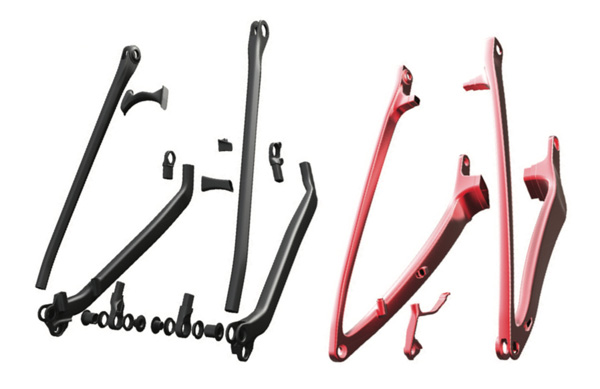
They also changed the frame geometry with a slacker headtube angle, shorter chainstay length, steeper seattube angle, longer toptube, shorter stem, lower stack height and increased standover space. Oh, and they changed the suspension curves to be more optimised with better mid-stroke support. That’s a lot of change to a bike that Schurter rode to the top of the XCO podium at both World Cups and World Championships on numerous occasions. And, notably for South Africans, also a number of Cape Epic stage wins…
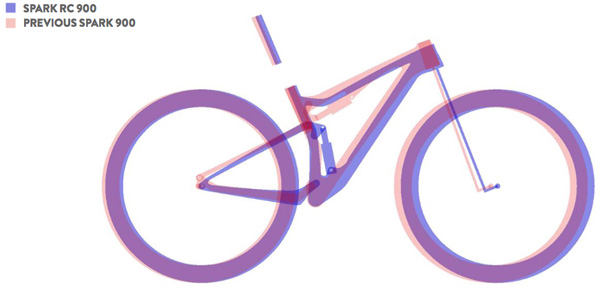
Still there is SCOTT’s Twin-Loc suspension control system, which is just a little more refined and has the handlebar-mount remote adjustment between Locked, Traction Mode and Descend Mode.
THE RIDE
There probably aren’t more appropriate places to test a new SCOTT Spark RC, than on the World Cup course at Lenzerheide, Switzerland. It’s a Swiss bike brand and Schurter lives down the road, making this his local trail-riding spot. Long, steady climbs, short, steep kickers, roots galore, loam, rocks, loose shale, fast, off-camber turns, long, technical descents, it was all there… As was Nino, who was happy to answer any questions, pose for photos and basically maintain his approachable global superstar image.
Once I got over the significant new look of the frame design, the next thing that struck me was the just how well finished off everything is. Call it Swiss precision if you want, but to us it should be compulsory for all mid-to-high end bikes to be exceptionally well finished. No sharp edges, no smudges on paint, no awkward looking protrusions. When you spend a lot of money on a bicycle – or anything – you expect a well-finished product. The Spark is a great example of this. It’s not that you don’t see this on other bikes; it just seems so emphatic on the Spark.
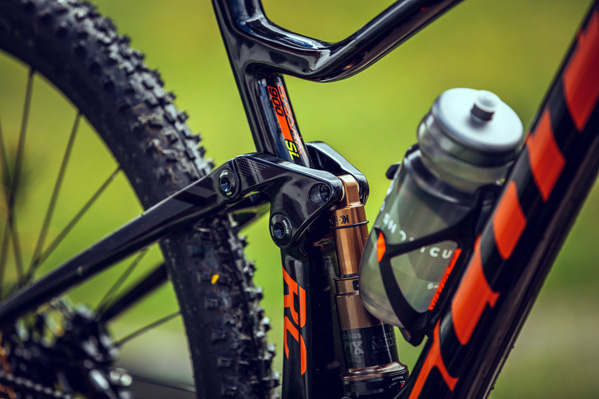
The light weight is immediately evident. 30 metres of flat-out pedalling from the bike garage on tar and I felt a bit like I was pedalling an ice-cream stick. Light and stiff. The engineers said that by changing the rear triangle from 18 parts to just two, they were able to trim weight and increase rigidity. The chainstays are also shorter which makes for a more rigid structure and therefore a more snappy feel.
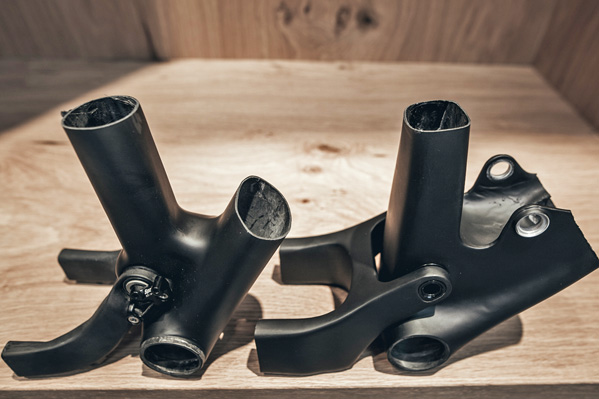
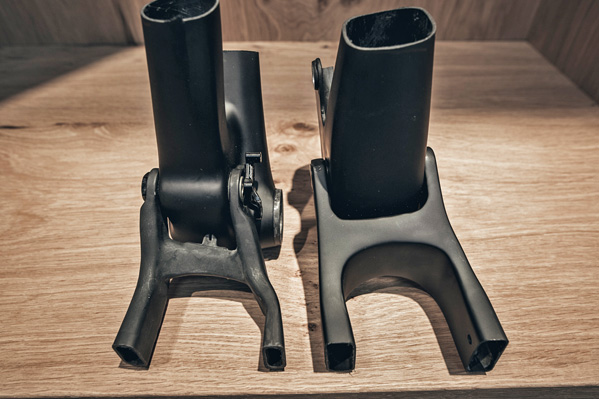
Next up was a series of gravel paths, not super loose, but certainly not firm. They tilted onto a steady descent with first a right and then a left turn – uncambered and a perfect place to get a feel for cornering stability before the real trails began. I repeated them a few times to get a sense of the bike’s (and tyres) limitations and felt quite composed at speed.
And then it was off to the XCO course, which was very non-World Cup looking without the course marking tape, the cow-bell clanging fans and the background buzz of race commentary. Some of the sections were actually quite grassy and yet to be ridden in. This combined with some steep ascents – ridiculously steep ascents – made for a good climbing test.
When you’re new to a trail, you have no real reference other than how you feel at that moment. But there’s enough ascent there to make you climb repeatedly. And I was repeating laps, which meant as I became more familiar with the trails, I was able to focus on how the bike felt.
The two RC models I test rode both had the new SRAM Eagle 1×12 gearing, which certainly gave me a new perspective on single chainring set-ups (look out for my SRAM Eagle encounter on this site soon). The RC range only provides for a single chainring… And while I only rode the RC900 (29ers), all the RC models are also available in RC700, the 27.5-inch wheel version.
Now obviously these bikes climbed well. I’d be shocked if they didn’t. For starters, the RC has lightest full-sus frame on earth. I was curious to see how the more relaxed headtube angle (68.5 degrees) would affect the climbing. But by lengthening the top-tube, lowering the headtube height, adding a shorter stem and steepening the seattube angle slightly (73.8 degrees), the SCOTT guys made it still feel agile and aggressive, even on the steepest pitches.
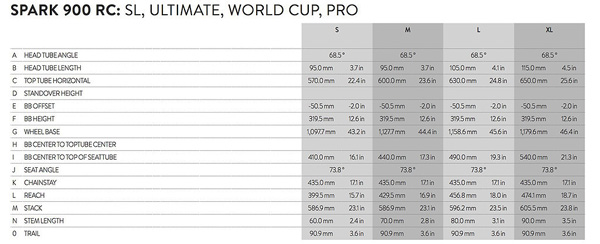
Descending was what I was looking forward to. Or so I thought. During the first hour or so, I was a little wary on the descents. But then I realised so was everyone else. The wet roots and mud from recent rains made some of the descents pretty high risk and I found myself in a bit of trouble a couple of times. I softened the tyres slightly, hardened up my attitude somewhat and that made a difference. But wet roots on steep downs were still uncomfortable. I’d have to put my descending judgment on hold…
On subsequent days with blue skies and warm sunshine drying out the trails I was able to get a proper feel for the RC’s descending capabilities. Actually I took two successive ski lifts and then spent about 45 minutes descending on trails that ranged from jeep track to gravel road to deep singletrack, with varying surfaces and a lot of steep gradients.
There were hairy moments for sure as I found myself pushing my personal limits, but on the whole, I found the high-speed stability to be very good. The small-bump compliance was superb and I never really felt like the 100mm of travel was severely challenged. Okay, make a couple of times, but then this was the Swiss Alps and we really don’t have too many similar descents in South Africa, certainly not on regular trails and only occasionally on XC race tracks.
The damping has been improved on the new design to give greater support throughout the stroke. The bike was able to take some pretty big hits without giving up all the travel unnecessarily. It is possible to have volume spacers added to the rear shock, should you wish to make it even more progressive.
I have to say I have seldom used brakes as much as I did on those RC models. Unlike the other Sparks I tested (the standard Spark and the Spark Plus) there is no dropper seatpost and the with the most aggressive riding position of the three, your sense of speed just feels elevated on a sub-10kg bike with 2.25 width Schwalbe Rocket Ron tyres. Well, the RC is 9.86kg and the World Cup is 10.20kg (large sizes).
I felt the RC World Cup to be the ‘better braker’ of the two. It is specced with Shimano XTR, while the SL had SRAM Level Ultimate stoppers. At TREAD we have been fans of Shimano brakes for some time and I just felt more in control with the Shimano set-up on the tricky descents, with no real noticeable fade and good lever position. And the descents are those that leave your discs glowing by the time you reach the bottom.
I like that SCOTT uses both Shimano and SRAM brakesets on its RC range, but you’ll find mostly Shimano on the other Spark models, which is not a bad thing at all.
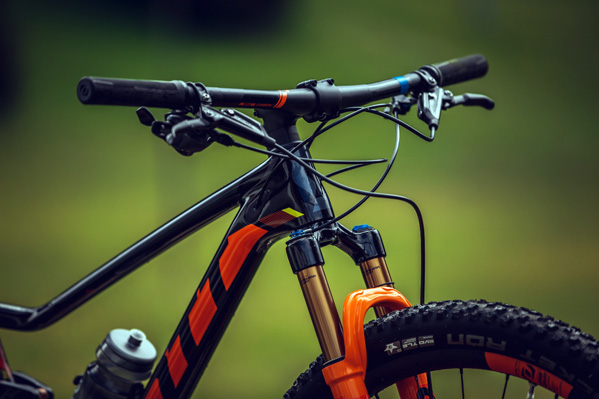
On these long descents I was able to get a proper feel for the RC’s cornering capabilities. There were no manicured berms or flow lines, just natural trails and all variety of turns on some pretty rugged surfaces in places. In all though, I never really felt any unexpected twitchiness at speed, while the shortish chainstays (435mm) helped low-speed switchback style turns feel super controlled.
High-speed cornering performance depends on a few factors, including a properly set-up fork. SCOTT had the Fox tech crew there to do the set-up for us, but it’s really not that difficult to do yourself. I found myself opting for a slightly lower fork pressure than they recommended for my weight, but I do like to run my tyres a little harder than most, especially on rougher terrain I’m riding for the first time…
The SL had the brand new Fox 32 Float Factory fork, while the World Cup had the Fox 32 Float Performance Elite fork, the former being Fox’s new ‘lightest ever’ race fork with it’s Step-Cast lowers. Both felt well suited to the bikes, although the Kashima-coated stanchions on the Factory model did feel that little bit smoother.
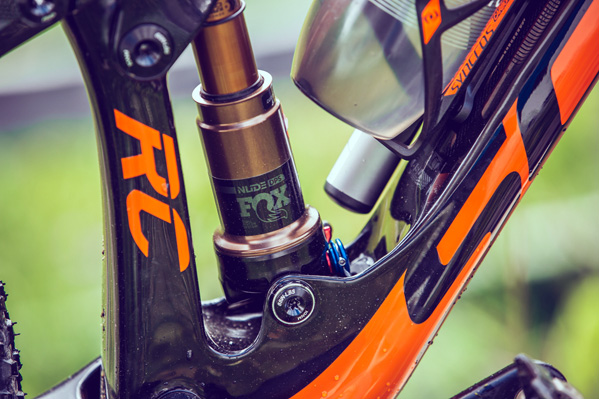
Most of the contact points and cockpit are from SCOTT’s in-house brand Syncros, which had seen significant improvements in quality and design since it came under the SCOTT stable. Wide bars are paired to a stem that allows you to seamlessly integrate aero-shaped stem spacers and a Garmin GPS mount. Syncros also provides carbon fibre rimmed wheels, which are pretty stiff without being unnecessarily hard, while the hubs are all Syncros, by DT Swiss with boost width front and rear.
These were the first XC/marathon bikes I’d ridden with boost width hubs. I can’t say I noticed the difference from the ‘old’ hub widths, but the research across all brands shows greater stability and strength in the wheels as a result of the wider hubs.
THE VERDICT
The new Spark is the result of a three-year project. It’s obvious that SCOTT spared no costs in designing what it feels currently the best possible full-suspension XCO/Marathon frame there is. That the engineers incorporated new technologies with Boost width hubs and BB and Trunnion Mount metric shock, completely changing the suspension design in the process, confirms it was a labour of love too.
The RC SL is the pinnacle model and I felt that while it is an incredible piece of beautifully engineered equipment, it’s probably not appropriate for anyone but pro racers. The RC World Cup seems the more practical go-to model of the two. It’s about 300g heavier, has a lower-model Fox fork, XO SRAM Eagle gearing instead of the XX SRAM Eagle on the SL and Shimano XTR brakes versus the SRAM Level Ultimates on the flagship model.
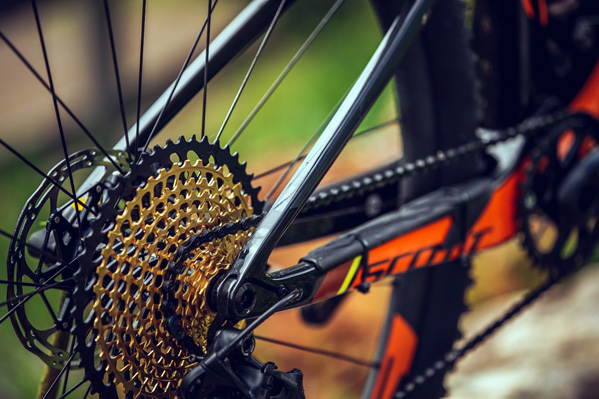
Who is best suited to the RC range of Sparks? Well, having ridden all three versions (the RC, the regular Spark and the Spark Plus), I can honestly say that SCOTT has successfully – and smartly – sub-divided the XCO/Marathon full-suss category. If you’re a serious XCO or marathon racer that’s chasing podium places, or at least are content to sacrifice comfort for performance, the RC range is where you’d start. But only highly conditioned, skilled riders will really be able to get this model to achieve its potential. The rest of us should be looking at the other two Spark categories for our ideal full-suspension bike.
Details of the Spark RC SL
Details of the Spark RC World Cup
Look out for a TREAD summary review of the Spark and Spark Plus models in the near future.
